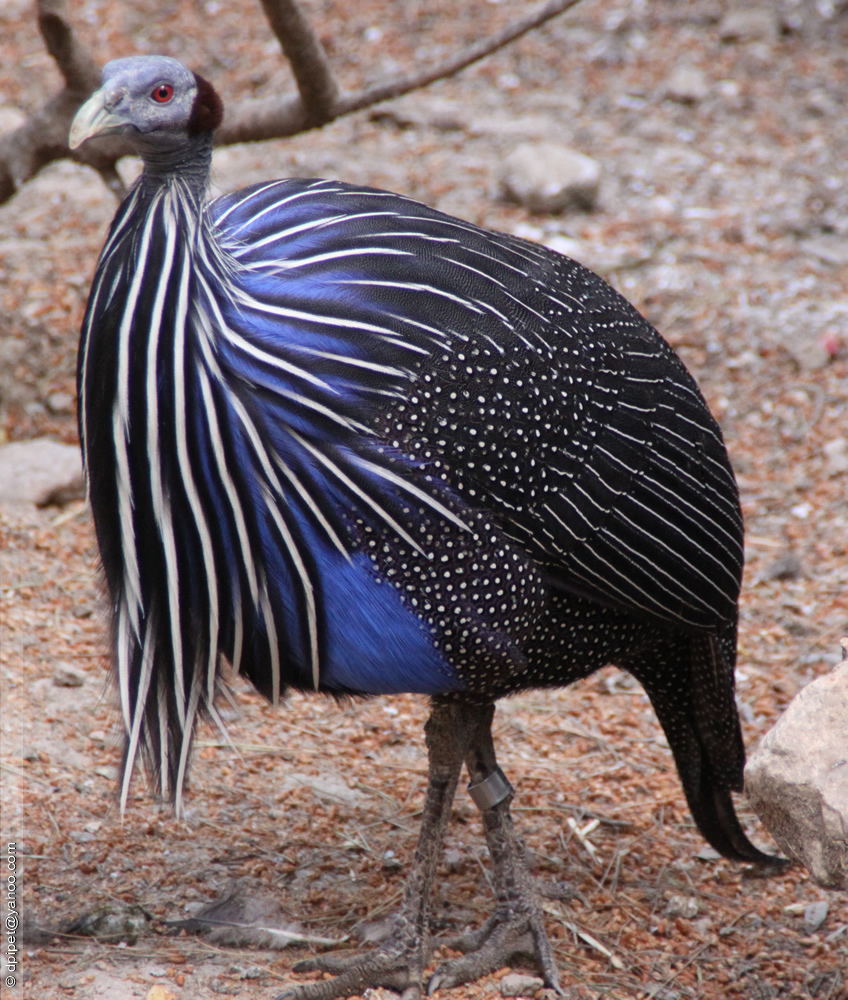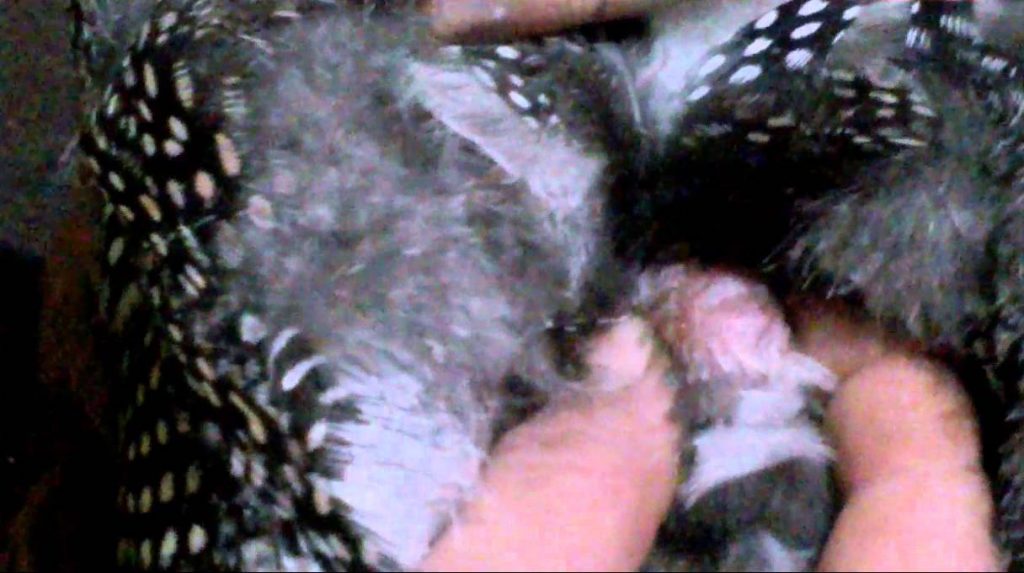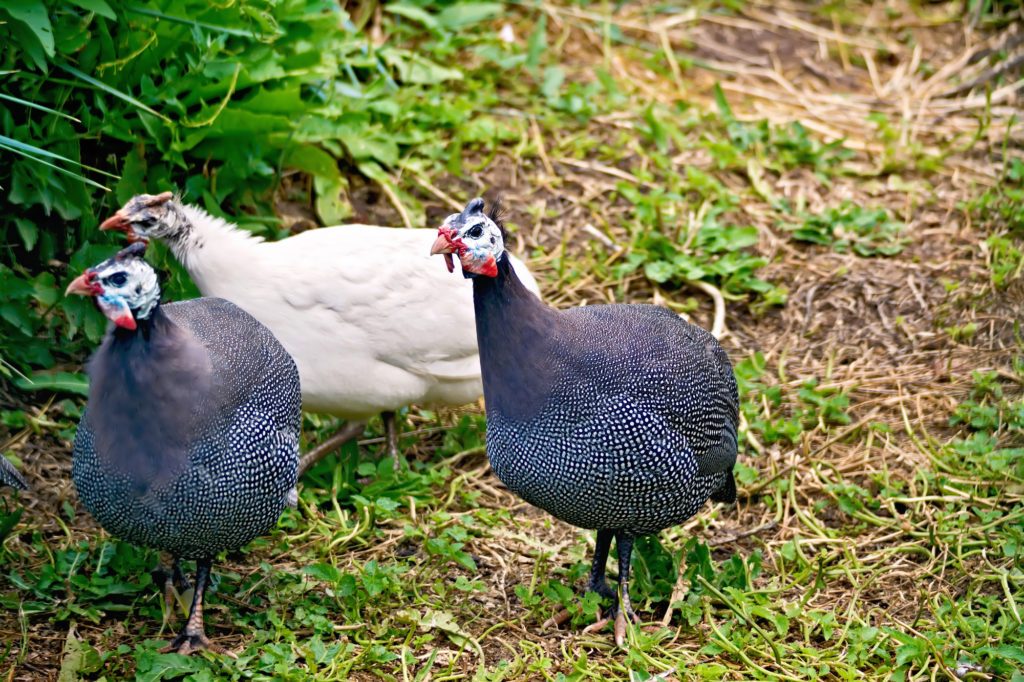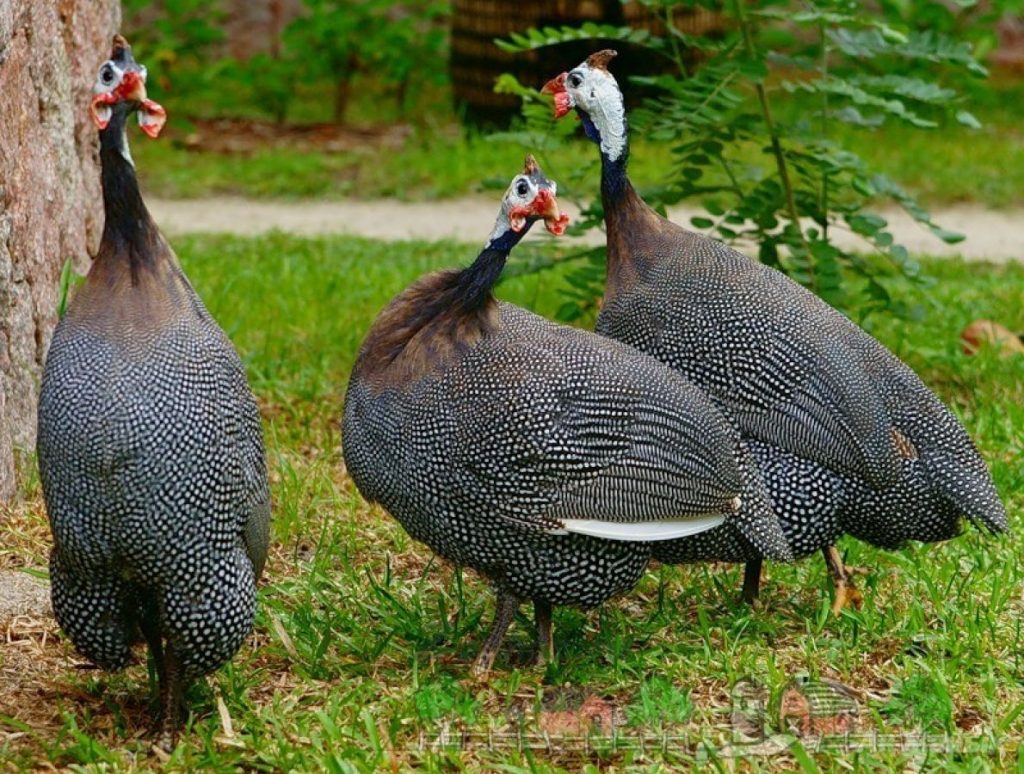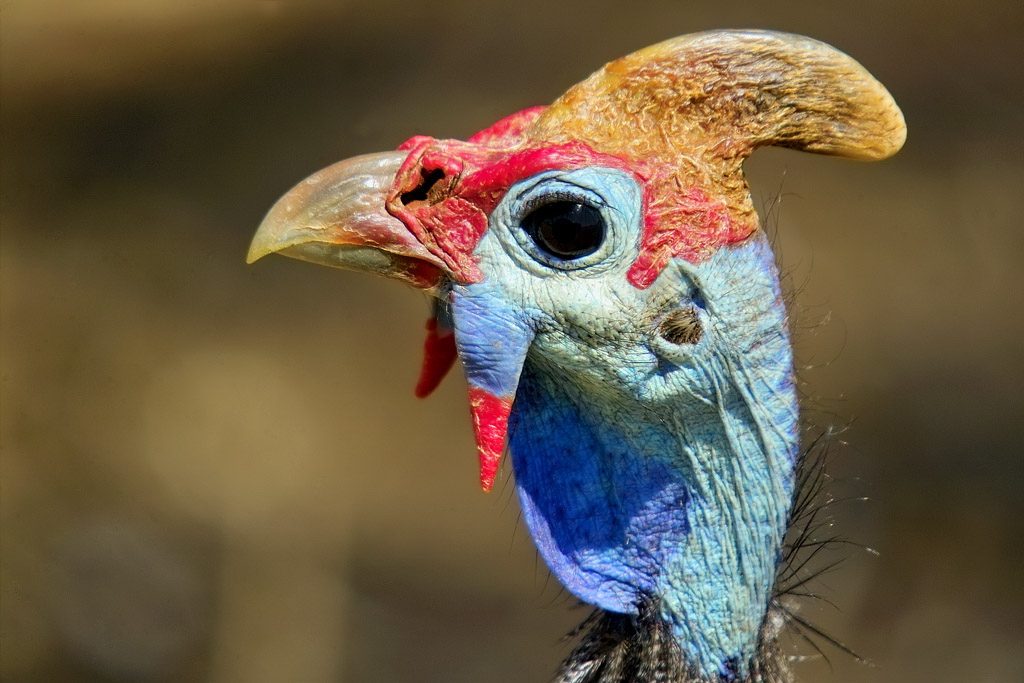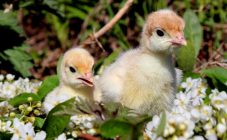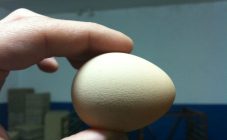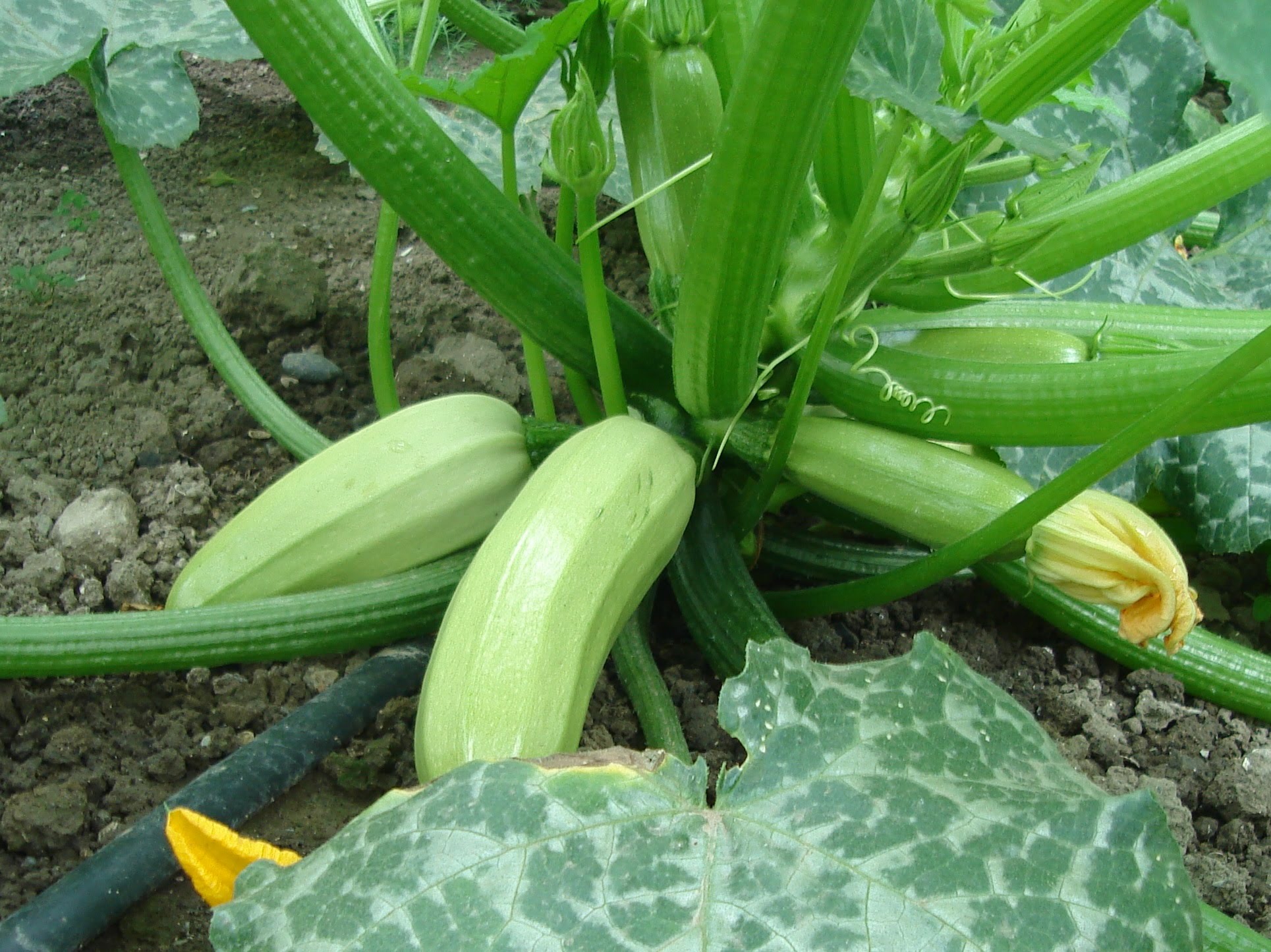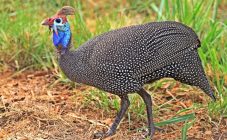Content:
The appearance of an exotic bird combines the characteristic features of chicken and turkey. Her birthplace is the sunny island of Madagascar, as well as the western regions of Africa. There are 25 varieties of it, but only the domestic gray guinea fowl is bred.
Characteristics of guinea fowl
Guinea fowl is called a royal bird. The domestic bird has a large body with a round back. The plumage is motley, gray, with a pattern in the form of white spots, surrounded by black rims. The head and neck are bare, the wings are short, the tail is pulled down. A characteristic feature of guinea fowl is the presence of a horn-like growth on the head. Under the hooked beak are fleshy outgrowths - catkins (beard).
The bird prefers to keep in a flock, which is controlled by the leader. Signaling to each other about danger, guinea fowls can take off. Therefore, in an open enclosure, birds should be with clipped wings.
An unusual bird is rarely found on domestic farms, although it is precisely because of its exoticism that a business can be very profitable. The eggs are pear-shaped, do not cause allergies and are stored for about six months, thanks to their particularly strong shell. Their price exceeds the cost of chicken eggs by 5 times. The poultry produces more meat with a high hemoglobin content. Meat contains 95 amino acids, it is useful for people weakened after illness, pregnant women and women in labor.
Guinea fowl breeding is beneficial not only because of the eggs and tender meat. The voice of the guinea fowl serves as an excellent alarm when predators approach. They eat large amounts of weeds and insects, including the Colorado potato beetle, slugs, and aphids. Farmers appreciate the ability of guinea fowls not to harm crops.
These birds hardly get sick and can tolerate rather low temperatures, up to -55 degrees. However, chickens are vulnerable to dampness and cold as wild birds breed during the dry season. Guinea fowl is able to decorate any country estate, and its feathers are used by needlewomen as an adornment of decorative and art products.
A large number of males will lead to a lack of eggs, as well as fights for females. Therefore, one of the important questions arising from the owner of the guinea fowl is how to distinguish a female from a male?
Why is it important to know the gender of guinea fowls
Guinea fowls produce eggs, so they are valued higher than guinea fowls. One male guinea fowl is capable of fertilizing five females. That is, for a tribe of 24 individuals, only 4 males are enough. It is important not to be mistaken with the correct choice of the sex of the birds. If the farmer does not know how to distinguish the guinea fowl by sex when buying, he may face deception. As a result, money will be wasted, and further business simply will not work. Therefore, the poultry farmer faces an important question of how to determine the sex of guinea fowls.
How to tell a male from a female
The actual question is how to distinguish a male guinea fowl from a female guinea fowl if they look the same. From 5 months onwards, the differences become noticeable. Birds of different sexes can be distinguished from each other by physiological and behavioral characteristics:
- body size;
- beak shape;
- the location of the ridge;
- head position;
- the shape of the abdomen;
- the color and shape of the earrings;
- voice;
- habits;
- primary sexual characteristics.
Body size
At 3 months of age, birds have differences in body weight. The female is larger than the male, not only in body size, but also in weight. Caesar's weight is usually 15-20% less than that of a female. However, the difference can be determined only at the age of 5 months; in the future, the birds retain approximately the same weight.
Beak shape
How to determine the gender of a guinea fowl? By the shape of the beak, you can find out the sex of the bird:
- Female. The beak is neat, small. The nostrils are small. The color of the beak and nostrils is pale. There are no tubercles, pronounced folds of the skin.
- Male. Large, rough beak. The nostrils are prominent. The color of the skin on the nostrils and part of the beak is blood red. There are growths on the beak.
To see these signs, you need to wait for the chicks to be 4-5 months old.
Ridge location
To distinguish this sign, you need to be very careful or experienced. The male comb, in contrast to the straight female comb, bends slightly backward. At the same time, it is slightly raised from the surface of the head. The caesar's crest is larger in size.
Head position
Females are characterized by an even, erect head position when walking. The proudly striding male slightly tilts his head forward, as if threatening rivals.
Stomach
The male belly looks voluminous and elastic. The belly of females is also voluminous, but softer.
Earring color and shape
Natural decoration of guinea fowl, earrings, are located directly under the beak. Females have neatly shaped pink, orange or reddish earrings. In males, earrings are a sign of strength and aggression. They are large, fleshy, blood red in color.
Such clear differences are characteristic of young birds. As they grow older, the guinea fowl earrings coarse, becoming almost the same as those of males.
Vote
How to distinguish guinea fowls by voice? Guinea fowls have a loud, melodic voice. Sensitive people can be annoyed by their screams. Short, abrupt, crackling sounds are given by the Caesars. The voice of the guinea fowl is a lingering trills, melodic, without crackling, singing.
Habits
Habits can also vary. Females have a meek disposition. Usually they walk with their heads down, as they are always busy with something. Caesars behave demonstratively, fluff up their tail to show their superiority.
Primary sexual characteristics
The only way to determine sex in very young chicks is by the structure of the genitals. This method allows you to find out the sex even of a 1 day old chick. Examination is best done with gloves so as not to infect the reproductive system.
Guinea fowls of both sexes are naturally shy and easily stressed. If the bird squeezes from fright, then the process can become painful and even traumatic for it. To relax, the bird is slowly stroked on the back. You need to hold it tightly, but carefully. The stroking process also activates blood circulation, increasing blood flow to the boy's penis and making it more visible.
Stages of determining the sex of a guinea fowl by genitals:
- The chicken is held in one hand and gently flipped onto its back.
- With the other hand, gently stretch the cloaca.
- The male's penis will appear as a pink tubercle, like a cone, about 1 cm long. The female's loop does not stand out in any way, looks like folds of pale pink skin.
For inspection, the bird can also be lowered upside down and its tail raised. If a novice poultry farmer does not have enough experience, then this method should be entrusted to a more experienced person.
An inexperienced poultry farmer can determine the difference between the sexes of a guinea fowl with 100% probability if several methods are used at once. The advantages of poultry make it possible to develop a good, practically waste-free business.
